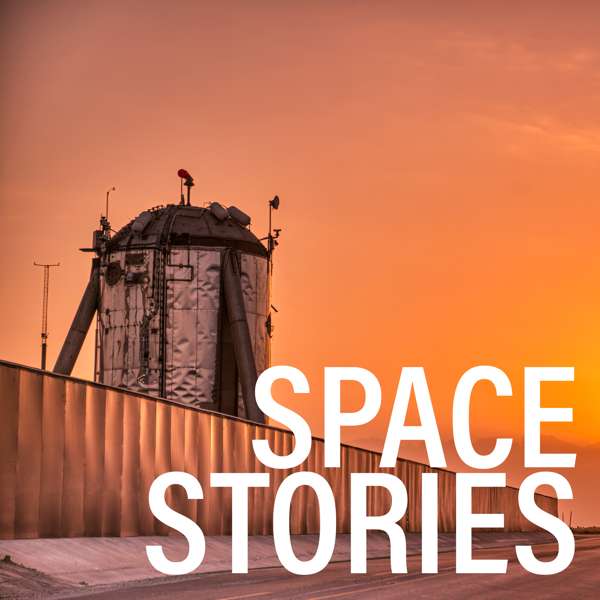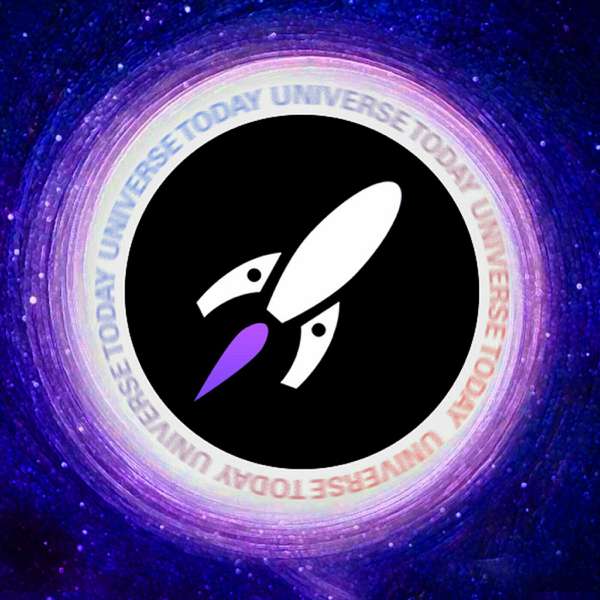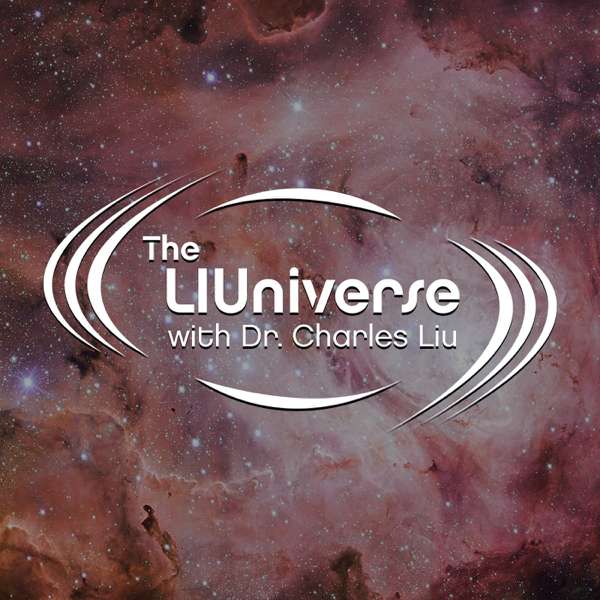We live in a universe of scientific wonders and breakthroughs that can change our lives. We want to share these wonders with you. So, Let’s Science!
- Home
- Top Charts
- Top Networks
- Top Apps
- Top Independents
- Top Podfluencers
- Top Picks
- Top Business Podcasts
- Top True Crime Podcasts
- Top Finance Podcasts
- Top Comedy Podcasts
- Top Music Podcasts
- Top Womens Podcasts
- Top Kids Podcasts
- Top Sports Podcasts
- Top News Podcasts
- Top Tech Podcasts
- Top Crypto Podcasts
- Top Entrepreneurial Podcasts
- Top Fantasy Sports Podcasts
- Top Political Podcasts
- Top Science Podcasts
- Top Self Help Podcasts
- Top Sports Betting Podcasts
- Top Stocks Podcasts
- Podcast News
- About Us
- Podcast Advertising
- Contact

 Our TOPPODCAST Picks
Our TOPPODCAST Picks  Stay Connected
Stay Connected


 Can coffee really help you live longer and protect your liver? Lindsay Sant and Lino Saubolle break down studies linking 3–4 cups a day to better health—and ask what really counts when it comes to longevity, lifestyle, and your daily brew.
Can coffee really help you live longer and protect your liver? Lindsay Sant and Lino Saubolle break down studies linking 3–4 cups a day to better health—and ask what really counts when it comes to longevity, lifestyle, and your daily brew. Advent begins. Help StarQuest bring faith and reason to the world. Become a $10/month patron (or increase your current donation by $10 per month) and be among the first 400 donors to receive a Mysterious World sticker signed by Jimmy and Dom. Your gift is matched up to $15,000.
Advent begins. Help StarQuest bring faith and reason to the world. Become a $10/month patron (or increase your current donation by $10 per month) and be among the first 400 donors to receive a Mysterious World sticker signed by Jimmy and Dom. Your gift is matched up to $15,000. A deadly tomb fungus may cure cancer. Caroline Knight shares with Lindsay Sant and Lino Saubolle how Aspergillus flavus, once blamed for the “mummy’s curse,” could hold the key to fighting leukemia.
A deadly tomb fungus may cure cancer. Caroline Knight shares with Lindsay Sant and Lino Saubolle how Aspergillus flavus, once blamed for the “mummy’s curse,” could hold the key to fighting leukemia. Paracetamol causes autism? Caroline Knight and Lindsay Sant unpack viral claims, breaks down the real science, and debunks harmful myths. They highlight what autism is, what causes it—and what absolutely doesn’t.
Paracetamol causes autism? Caroline Knight and Lindsay Sant unpack viral claims, breaks down the real science, and debunks harmful myths. They highlight what autism is, what causes it—and what absolutely doesn’t. Can a pill help your dog live longer—and could it work for humans too? Lindsay Sant, Lino Saubolle, and Dom Bettinelli unpack the science of canine aging, the ethics of life extension, and whether your dog should eat once a day.
Can a pill help your dog live longer—and could it work for humans too? Lindsay Sant, Lino Saubolle, and Dom Bettinelli unpack the science of canine aging, the ethics of life extension, and whether your dog should eat once a day.  A nova 6,000 light years away is about to light up our sky—are you ready? Lindsay Sant, Lino Saubolle, and Dom Bettinelli unpack the science and wonder behind T Coronae Borealis and ask: Can a star’s explosion renew our sense of awe?
A nova 6,000 light years away is about to light up our sky—are you ready? Lindsay Sant, Lino Saubolle, and Dom Bettinelli unpack the science and wonder behind T Coronae Borealis and ask: Can a star’s explosion renew our sense of awe? 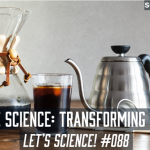 Can water, grind, and roast transform your cup—or ruin it? Lindsay Sant, Lino Saubolle, and Dom Bettinelli break down the chemistry of better brewing with simple, testable tweaks. Taste is tunable science.
Can water, grind, and roast transform your cup—or ruin it? Lindsay Sant, Lino Saubolle, and Dom Bettinelli break down the chemistry of better brewing with simple, testable tweaks. Taste is tunable science. 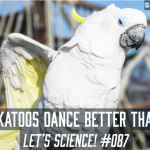 Cheeky or creative geniuses? Caroline Knight. Lindsay Sant, and Lino Saubolle unpack the science of dancing cockatoos, their hilarious antics, and what their spontaneous moves reveal about intelligence and joy.
Cheeky or creative geniuses? Caroline Knight. Lindsay Sant, and Lino Saubolle unpack the science of dancing cockatoos, their hilarious antics, and what their spontaneous moves reveal about intelligence and joy. Is “mind blanking” your brain’s reset button? Caroline Knight, Lindsay Sant, and Lino Saubolle reveal surprising science on this thought-free state, its link to stress, and how prayer or mindfulness might help.
Is “mind blanking” your brain’s reset button? Caroline Knight, Lindsay Sant, and Lino Saubolle reveal surprising science on this thought-free state, its link to stress, and how prayer or mindfulness might help.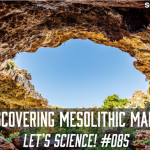 Maltese history just got 1,000 years older. Caroline, Lindsay, and Lino unpack stunning new research suggesting Mesolithic people lived in Malta long before the temples—complete with tools, fire pits, and seafood feasts.
Maltese history just got 1,000 years older. Caroline, Lindsay, and Lino unpack stunning new research suggesting Mesolithic people lived in Malta long before the temples—complete with tools, fire pits, and seafood feasts. A fungus that turns ants into zombies? Australia’s latest discovery stirs big questions about nature, culture, and collaboration. With Caroline Knight, Lindsay Sant, and Lino Saubolle.
A fungus that turns ants into zombies? Australia’s latest discovery stirs big questions about nature, culture, and collaboration. With Caroline Knight, Lindsay Sant, and Lino Saubolle.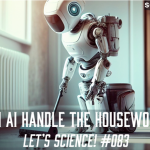 Could your next housemate be a robot? The team talks Neo Gamma, the AI-powered humanoid assistant from X1. Caroline Knight, Lindsay Sant, and Lino Saubolle weigh the promise—and pitfalls—of a future with home-helping bots.
Could your next housemate be a robot? The team talks Neo Gamma, the AI-powered humanoid assistant from X1. Caroline Knight, Lindsay Sant, and Lino Saubolle weigh the promise—and pitfalls—of a future with home-helping bots. A creepy-cool fungus turns spiders into zombies—then eats them! Caroline Knight, Lindsay Sant, and Lino Saubolle unpack how this eerie phenomenon may help us fight antibiotic resistance. Nature gets weird, but maybe even helpful.
A creepy-cool fungus turns spiders into zombies—then eats them! Caroline Knight, Lindsay Sant, and Lino Saubolle unpack how this eerie phenomenon may help us fight antibiotic resistance. Nature gets weird, but maybe even helpful.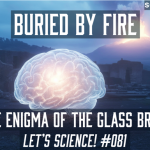 A brain turned to glass? Caroline Knight, Lindsay Sant, and Lino Saubolle reveal how a victim of Mount Vesuvius was preserved in a shocking state—and what it tells us about ancient Rome, volcanic fury, and the science behind vitrification.
A brain turned to glass? Caroline Knight, Lindsay Sant, and Lino Saubolle reveal how a victim of Mount Vesuvius was preserved in a shocking state—and what it tells us about ancient Rome, volcanic fury, and the science behind vitrification.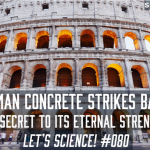 Ancient Roman concrete: what made it so strong? Lindsay Sant and Lino Saubolle break down new discoveries on its self-healing properties, Vitruvius’ architectural wisdom, and why modern engineers are taking notes. Science, history, and a little fun!
Ancient Roman concrete: what made it so strong? Lindsay Sant and Lino Saubolle break down new discoveries on its self-healing properties, Vitruvius’ architectural wisdom, and why modern engineers are taking notes. Science, history, and a little fun!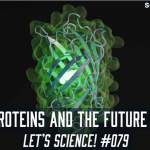 AI-designed proteins could revolutionize medicine! A new glowing molecule, ESM GFP, was created in days—something evolution would take 500 million years to do. Caroline Knight, Lindsay Sant, and Lino Saubolle break down what this means for biotech, genetics, and even sci-fi possibilities!
AI-designed proteins could revolutionize medicine! A new glowing molecule, ESM GFP, was created in days—something evolution would take 500 million years to do. Caroline Knight, Lindsay Sant, and Lino Saubolle break down what this means for biotech, genetics, and even sci-fi possibilities!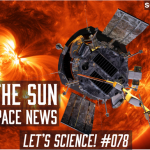 Spacecraft are pushing boundaries! Lindsay Sant and Lino Saubolle discuss NASA’s Parker Solar Probe’s fiery feat, Mercury’s latest close-up, private moon landers, and major rocket breakthroughs from SpaceX and Blue Origin. Science is on the move!
Spacecraft are pushing boundaries! Lindsay Sant and Lino Saubolle discuss NASA’s Parker Solar Probe’s fiery feat, Mercury’s latest close-up, private moon landers, and major rocket breakthroughs from SpaceX and Blue Origin. Science is on the move! Celebrate the Christmas spirit with Caroline Knight, Lindsay Sant, and Lino Saubolle as they uncover how the holiday season affects your brain! From festive joy boosting happy hormones to the science behind holiday stress—and even a real-life “Christmas spirit” brain study—you’ll be amazed!
Celebrate the Christmas spirit with Caroline Knight, Lindsay Sant, and Lino Saubolle as they uncover how the holiday season affects your brain! From festive joy boosting happy hormones to the science behind holiday stress—and even a real-life “Christmas spirit” brain study—you’ll be amazed! StarQuest needs your support to continue our mission of bringing faith and culture together in ways that educate, inspire, and entertain with all of our shows.
StarQuest needs your support to continue our mission of bringing faith and culture together in ways that educate, inspire, and entertain with all of our shows.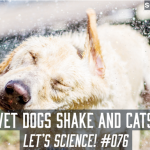 Why do dogs and other furry animals shake to dry off? Lindsay Sant and Lino Saubolle discuss new research that has discovered specialized touch receptors in animal skin that trigger this behavior and could lead to treatments for hypersensitive skin in humans and animals.
Why do dogs and other furry animals shake to dry off? Lindsay Sant and Lino Saubolle discuss new research that has discovered specialized touch receptors in animal skin that trigger this behavior and could lead to treatments for hypersensitive skin in humans and animals. Jimmy Akin invites you to join him in Italy in 2025 for the Holy Year for a once-in a lifetime, 12-day pilgrimage to the mysterious shrines and holy sites of Rome, Assisi, and more.
Jimmy Akin invites you to join him in Italy in 2025 for the Holy Year for a once-in a lifetime, 12-day pilgrimage to the mysterious shrines and holy sites of Rome, Assisi, and more.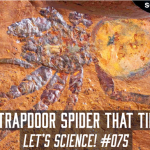 Scientists have discovered a giant dinosaur-era trapdoor spider fossil in Australia. Caroline Knight, Lindsay Sant, and Lino Saubolle discuss the find’s evolutionary history which offers insights into ancient ecosystems, and the important environmental role of spiders in controlling pests.
Scientists have discovered a giant dinosaur-era trapdoor spider fossil in Australia. Caroline Knight, Lindsay Sant, and Lino Saubolle discuss the find’s evolutionary history which offers insights into ancient ecosystems, and the important environmental role of spiders in controlling pests.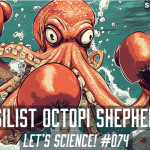 The octopus is a fascinating, intelligent creature and Lindsay Sant and Lino Saubolle discuss recent discoveries that some octopi will team up with, coax, and even punch fish as they work together to locate and capture prey, suggesting that octopuses may have a complex, social intelligence previously unrecognized in cephalopod behavior.
The octopus is a fascinating, intelligent creature and Lindsay Sant and Lino Saubolle discuss recent discoveries that some octopi will team up with, coax, and even punch fish as they work together to locate and capture prey, suggesting that octopuses may have a complex, social intelligence previously unrecognized in cephalopod behavior. Are there vast oceans of water underground on Mars? Caroline Knight and Lindsay Sant discuss recent data from NASA's InSight lander that indicate the water might be there and what it could mean for the future of space exploration and life on Mars.
Are there vast oceans of water underground on Mars? Caroline Knight and Lindsay Sant discuss recent data from NASA's InSight lander that indicate the water might be there and what it could mean for the future of space exploration and life on Mars.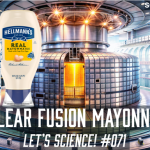 Nuclear fusion shows great promise as a nearly unlimited power source. Lindsay Sant and Lino Saubolle discuss the unexpected connection between fusion and mayonnaise, which scientists are using to model instabilities in inertial confinement fusion.
Nuclear fusion shows great promise as a nearly unlimited power source. Lindsay Sant and Lino Saubolle discuss the unexpected connection between fusion and mayonnaise, which scientists are using to model instabilities in inertial confinement fusion.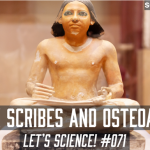 Ancient Egyptian scribes suffered from osteoarthritis, a condition still common today. Caroline Knight and Lindsay Sant discuss how the daily rigors of the scribes mirror modern office worker's health challenges and how study of the scribes can help people today.
Ancient Egyptian scribes suffered from osteoarthritis, a condition still common today. Caroline Knight and Lindsay Sant discuss how the daily rigors of the scribes mirror modern office worker's health challenges and how study of the scribes can help people today.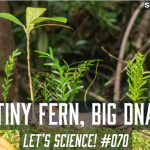 This tiny fork fern has the largest known genome of any organism. Caroline Knight tells Lindsay Sant and Lino Saubolle about its discovery and the biological implications of large genomes, such as slower growth and reduced efficiency.
This tiny fork fern has the largest known genome of any organism. Caroline Knight tells Lindsay Sant and Lino Saubolle about its discovery and the biological implications of large genomes, such as slower growth and reduced efficiency.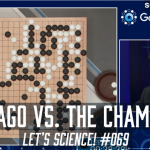 Go is one of the most difficult strategy board games to master for humans and AI alike. Lindsay Sant and Lino Saubolle discuss a documentary about Google's DeepMind's 2016 match against human Go master and its significance for how it could tackle real-world challenges.
Go is one of the most difficult strategy board games to master for humans and AI alike. Lindsay Sant and Lino Saubolle discuss a documentary about Google's DeepMind's 2016 match against human Go master and its significance for how it could tackle real-world challenges.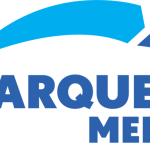 StarQuest CEO Dom Bettinelli has a special message for all listeners and supporters of StarQuest's shows.
StarQuest CEO Dom Bettinelli has a special message for all listeners and supporters of StarQuest's shows. Researchers have discovered a new prehistoric giant goose-like bird in South Australia, and Caroline Knight and Lindsay Sant discuss the unique creature, its environment, and the other mega-fauna it would have co-existed with. Plus more on observing ants and SpaceX's Starship launch!
Researchers have discovered a new prehistoric giant goose-like bird in South Australia, and Caroline Knight and Lindsay Sant discuss the unique creature, its environment, and the other mega-fauna it would have co-existed with. Plus more on observing ants and SpaceX's Starship launch!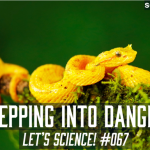 What would you be willing to do for science? Lindsay Sant and Lino Saubolle discuss a researcher who stepped on deadly snakes 40,000 times to better predict snake bites on behalf of the 5 million people bitten by snakes annually.
What would you be willing to do for science? Lindsay Sant and Lino Saubolle discuss a researcher who stepped on deadly snakes 40,000 times to better predict snake bites on behalf of the 5 million people bitten by snakes annually.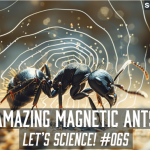 Consider the lowly ant. Caroline Knight tells Lindsay Sant and Lino Saubolle about the desert ant and how they use the Earth's magnetic field to navigate. A recent study found their surprisingly adaptable brains changed due to altered magnetic fields. What does this mean for other animals?
Consider the lowly ant. Caroline Knight tells Lindsay Sant and Lino Saubolle about the desert ant and how they use the Earth's magnetic field to navigate. A recent study found their surprisingly adaptable brains changed due to altered magnetic fields. What does this mean for other animals? Japan plans to launch a satellite to test space-based solar power in 2025. Lindsay Sant and Lino Saubolle discuss the technical aspects, scalability, and environmental concerns, balancing enthusiasm for its potential with realism about challenges and costs.
Japan plans to launch a satellite to test space-based solar power in 2025. Lindsay Sant and Lino Saubolle discuss the technical aspects, scalability, and environmental concerns, balancing enthusiasm for its potential with realism about challenges and costs.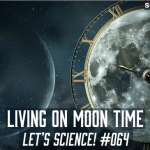 A coalition of countries are creating a standardized Lunar time zone, and Lindsay Sant and Lino Saubolle discuss why this is important to the future of space travel; how mass and gravity affect timekeeping; and the challenges to keeping time beyond Earth.
A coalition of countries are creating a standardized Lunar time zone, and Lindsay Sant and Lino Saubolle discuss why this is important to the future of space travel; how mass and gravity affect timekeeping; and the challenges to keeping time beyond Earth.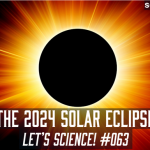 With a large part of the US getting a chance to see a total solar eclipse this week, Caroline Knight, Lindsay Sant, and Lino Saubolle discuss eclipse science and viewing tips for those lucky enough to be in the path.
With a large part of the US getting a chance to see a total solar eclipse this week, Caroline Knight, Lindsay Sant, and Lino Saubolle discuss eclipse science and viewing tips for those lucky enough to be in the path.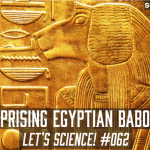 Baboons in ancient Egypt held special significance, even providing the form of one of their gods. Caroline Knight, Lindsay Sant, and Lino Saubolle discuss how recent DNA finds trace their origins to the land of Punt and reveal insights into ancient trade routes and more.
Baboons in ancient Egypt held special significance, even providing the form of one of their gods. Caroline Knight, Lindsay Sant, and Lino Saubolle discuss how recent DNA finds trace their origins to the land of Punt and reveal insights into ancient trade routes and more. The Moon is indeed shrinking. Caroline Knight explains to Lindsay Sant and Lino Saubolle how the Moon is contracting and cooling over time, causing moonquakes, shrinking about 150 feet every few hundred million years, and potentially affecting future Artemis lunar missions.
The Moon is indeed shrinking. Caroline Knight explains to Lindsay Sant and Lino Saubolle how the Moon is contracting and cooling over time, causing moonquakes, shrinking about 150 feet every few hundred million years, and potentially affecting future Artemis lunar missions.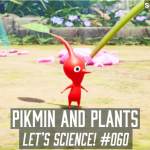 Plant-animal hybrids may only exist in the Pikmin game, but Caroline Knight tells Lindsay Sant and Lino Saubolle that there are also real-life photosynthetic animals that convert sunlight to energy, and discusses how all that works.
Plant-animal hybrids may only exist in the Pikmin game, but Caroline Knight tells Lindsay Sant and Lino Saubolle that there are also real-life photosynthetic animals that convert sunlight to energy, and discusses how all that works.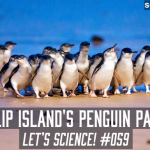 The little penguins of Phillip Island, Australia, are a unique avian population. Lindsay Sant and Lino Saubolle discuss their unique characteristics and life cycle and the role of ecotourism in habitat protection as a testament to effect conservation efforts.
The little penguins of Phillip Island, Australia, are a unique avian population. Lindsay Sant and Lino Saubolle discuss their unique characteristics and life cycle and the role of ecotourism in habitat protection as a testament to effect conservation efforts. Explore the science of Christmas trees with Caroline Knight, Lindsay Sant, and Lino Saubolle, including traditional trees from Europe and North America, but also some native Australian trees that would make great living Christmas trees.
Explore the science of Christmas trees with Caroline Knight, Lindsay Sant, and Lino Saubolle, including traditional trees from Europe and North America, but also some native Australian trees that would make great living Christmas trees. Dive into the world of bizarre starfish facts! Caroline Knight tells Lindsay Sant and Lino Saubolle about their unique biology, complex genetics, distinctive radial symmetry, and that their whole body is a head. Reflect with us on our enduring curiosity about nature and the critical need to preserve the rich tapestry of life on Earth.
Dive into the world of bizarre starfish facts! Caroline Knight tells Lindsay Sant and Lino Saubolle about their unique biology, complex genetics, distinctive radial symmetry, and that their whole body is a head. Reflect with us on our enduring curiosity about nature and the critical need to preserve the rich tapestry of life on Earth.  StarQuest CEO Dom Bettinelli has a special message for listeners as we approach the Christmas season. We need to hear from you this Advent and Christmas at sqpn.com/give
StarQuest CEO Dom Bettinelli has a special message for listeners as we approach the Christmas season. We need to hear from you this Advent and Christmas at sqpn.com/give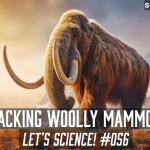 Isotopes in an Alaskan woolly mammoth's tusk have helped scientists track the probable journey of this extinct creature. Caroline Knight shares the fascinating life of Kick the Mammoth with Lindsay Sant and Lino Saubolle.
Isotopes in an Alaskan woolly mammoth's tusk have helped scientists track the probable journey of this extinct creature. Caroline Knight shares the fascinating life of Kick the Mammoth with Lindsay Sant and Lino Saubolle.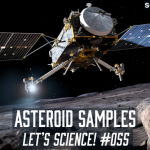 Space probes have begun returning samples of asteroids to Earth so Caroline Knight shares with Lindsay Sant and Lino Saubolle the exciting news about the asteroids Bennu and Ryugu from US and Japanese space agencies.
Space probes have begun returning samples of asteroids to Earth so Caroline Knight shares with Lindsay Sant and Lino Saubolle the exciting news about the asteroids Bennu and Ryugu from US and Japanese space agencies. The Vesuvius Challenge is a scientific competition to unravel the text on burned papyri from the ancient Roman city of Herculaneum. Lindsay Sant and Lino Saubolle discuss the first milestone in which AI was used to read a word on a scroll which can never be unrolled and what comes next.
The Vesuvius Challenge is a scientific competition to unravel the text on burned papyri from the ancient Roman city of Herculaneum. Lindsay Sant and Lino Saubolle discuss the first milestone in which AI was used to read a word on a scroll which can never be unrolled and what comes next.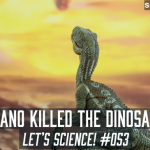 A new study challenges the conventional theory that an asteroid killed the dinosaurs. Lindsay Sant and Lino Saubolle discuss the idea that massive volcanic eruptions were responsible, the scientific evidence for the theory, and more.
A new study challenges the conventional theory that an asteroid killed the dinosaurs. Lindsay Sant and Lino Saubolle discuss the idea that massive volcanic eruptions were responsible, the scientific evidence for the theory, and more.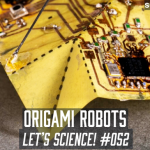 Imagine a tiny robot that can fly through the air, powered by light, and able to change its shape. Lindsay Sant and Lino Saubolle discuss the latest experimental robots that move through the air by snapping into new shapes, allowing for sophisticated mass dispersal of sensors.
Imagine a tiny robot that can fly through the air, powered by light, and able to change its shape. Lindsay Sant and Lino Saubolle discuss the latest experimental robots that move through the air by snapping into new shapes, allowing for sophisticated mass dispersal of sensors.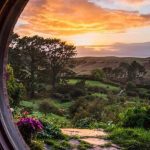 We need your help to continue to produce our great Catholic shows that explore the intersection of faith and modern culture and look at the world from a uniquely Catholic perspective.
We need your help to continue to produce our great Catholic shows that explore the intersection of faith and modern culture and look at the world from a uniquely Catholic perspective.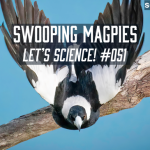 Dive into a wild ride as Lindsay Sant and Lino Saubolle unravel the mystery of magpie swooping in springtime—attacking, singing, and all. Don't miss the laughs and insights, and discover how to befriend these feathered friends!
Dive into a wild ride as Lindsay Sant and Lino Saubolle unravel the mystery of magpie swooping in springtime—attacking, singing, and all. Don't miss the laughs and insights, and discover how to befriend these feathered friends! Explore the wonders of exoplanets with Caroline Knight, Lindsay Sant, and Lino Saubolle as they discuss fascinating exoplanets like the egg-shaped WASP-12b, the blue-hued HD 189733B, and the temperature-swings of HD 80606B. Uncover the mysteries beyond our solar system.
Explore the wonders of exoplanets with Caroline Knight, Lindsay Sant, and Lino Saubolle as they discuss fascinating exoplanets like the egg-shaped WASP-12b, the blue-hued HD 189733B, and the temperature-swings of HD 80606B. Uncover the mysteries beyond our solar system.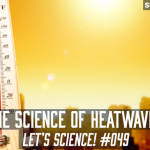 The world is experiencing scorching heat waves, with Europe facing record-breaking temperatures. Caroline Knight tells Lindsay Sant and Lino Saubolle that rising global temperatures and El Nino are contributing to the intensity of these heat waves; Wildfires causing damage in Spain and Canada. Climate change is altering seasons, and urgent action is required to mitigate further damage.
The world is experiencing scorching heat waves, with Europe facing record-breaking temperatures. Caroline Knight tells Lindsay Sant and Lino Saubolle that rising global temperatures and El Nino are contributing to the intensity of these heat waves; Wildfires causing damage in Spain and Canada. Climate change is altering seasons, and urgent action is required to mitigate further damage.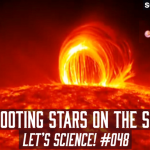 The Sun's surface is a fascinating place and Caroline tells Lindsay and Lino about new discoveries of 'shooting stars' in the Sun's corona in spectacular plasma displays known as coronal rain.
The Sun's surface is a fascinating place and Caroline tells Lindsay and Lino about new discoveries of 'shooting stars' in the Sun's corona in spectacular plasma displays known as coronal rain. Do you know your scientific history? Caroline quizzes Lindsay and Lino to see if they know the order in which the top discoveries and theories of the past 100 years occurred. Can you do better than they did? Try it out and you might also learn a thing or two.
Do you know your scientific history? Caroline quizzes Lindsay and Lino to see if they know the order in which the top discoveries and theories of the past 100 years occurred. Can you do better than they did? Try it out and you might also learn a thing or two.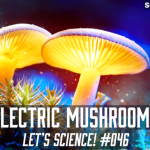 Mushrooms are amazing. Lindsay and Lino discuss research that suggests mushrooms communicate using underground electrical signals after rainfall in a mycorrhizal network. Of course, the show wouldn't be complete with some puns in "spore" taste.
Mushrooms are amazing. Lindsay and Lino discuss research that suggests mushrooms communicate using underground electrical signals after rainfall in a mycorrhizal network. Of course, the show wouldn't be complete with some puns in "spore" taste.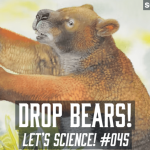 The Drop Bear is a mythical creature often used to tease tourists to Australia, but as Caroline and Lindsay discuss there really was an ancient creature that very much fit its description, as well as other even stranger prehistoric creatures on the continent.
The Drop Bear is a mythical creature often used to tease tourists to Australia, but as Caroline and Lindsay discuss there really was an ancient creature that very much fit its description, as well as other even stranger prehistoric creatures on the continent.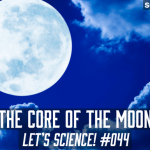 The Moon isn't made of cheese as young Lindsay once thought, and Caroline explains that scientists have finally confirmed it is a solid ball of iron by measuring acoustic waves from moonquakes
The Moon isn't made of cheese as young Lindsay once thought, and Caroline explains that scientists have finally confirmed it is a solid ball of iron by measuring acoustic waves from moonquakes Fulgurites are naturally occurring crystals formed by lightning striking and melting sand or soil. Caroline Knight tells Lindsay Sant and Lino Saubolle about these fascinating formations and new discoveries of never-before-seen minerals found in them. Plus, the latest on SpaceX's Starship Heavy.
Fulgurites are naturally occurring crystals formed by lightning striking and melting sand or soil. Caroline Knight tells Lindsay Sant and Lino Saubolle about these fascinating formations and new discoveries of never-before-seen minerals found in them. Plus, the latest on SpaceX's Starship Heavy.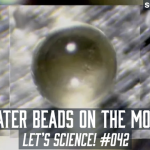 New discoveries may have revealed lots of water on the Moon. Caroline tells Lindsay and Lino about the Chinese discovery of glass beads on the lunar surface that contain water. Plus, a bonus discussion about screaming plants!
New discoveries may have revealed lots of water on the Moon. Caroline tells Lindsay and Lino about the Chinese discovery of glass beads on the lunar surface that contain water. Plus, a bonus discussion about screaming plants!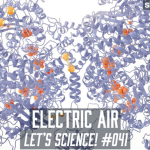 What if we could power our electronic devices from the air around us? It's not just science fiction. Lindsay Sant and Lino Saubolle discuss new research that shows the possibilities of harvesting hydrogen in the air using a unique enzyme that produces an electric current.
What if we could power our electronic devices from the air around us? It's not just science fiction. Lindsay Sant and Lino Saubolle discuss new research that shows the possibilities of harvesting hydrogen in the air using a unique enzyme that produces an electric current.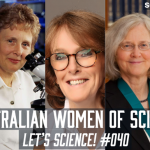 Celebrating International Women's Day, Caroline Knight and Lindsay Sant discuss some of Australia's greatest scientists who happen to be women, Cathy Foley, Anne Kelso, Elizabeth Blackburn, Michele Simmons, and Fiona Ward.
Celebrating International Women's Day, Caroline Knight and Lindsay Sant discuss some of Australia's greatest scientists who happen to be women, Cathy Foley, Anne Kelso, Elizabeth Blackburn, Michele Simmons, and Fiona Ward.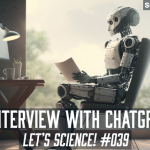 What is ChatGPT? Caroline Knight, Lindsay Sant, and Lino Saubolle interview the chat AI to ask it about itself, get its take on human fears of IA, and ask for its advice on how to have a good and fruitful Lent.
What is ChatGPT? Caroline Knight, Lindsay Sant, and Lino Saubolle interview the chat AI to ask it about itself, get its take on human fears of IA, and ask for its advice on how to have a good and fruitful Lent.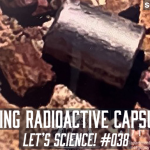 This week, Caroline Knight tells Lindsay Sant and Lino Saubolle about an extremely dangerous radioactive capsule "fell of the back of a truck" in Western Australia and the steps that were taken to recover the tiny pellet.
This week, Caroline Knight tells Lindsay Sant and Lino Saubolle about an extremely dangerous radioactive capsule "fell of the back of a truck" in Western Australia and the steps that were taken to recover the tiny pellet.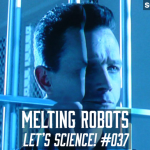 It's not yet the T1000 from Terminator, but Lindsay Sant and Lino Saubolle discuss a new proof-of-concept for a robot that can transform from solid to liquid and back and even escape from a barred container.
It's not yet the T1000 from Terminator, but Lindsay Sant and Lino Saubolle discuss a new proof-of-concept for a robot that can transform from solid to liquid and back and even escape from a barred container. 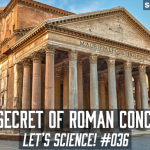 Why is it Roman buildings made from concrete still stand today? Lindsay Sant and Lino Saubolle discuss recent research that shows Roman concrete had a secret: It was self-healing!
Why is it Roman buildings made from concrete still stand today? Lindsay Sant and Lino Saubolle discuss recent research that shows Roman concrete had a secret: It was self-healing!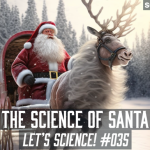 How does Santa reach every child in the world on Christmas night? What would it take to make those reindeer fly at those speeds? Why doesn't Santa age? Caroline Knight discusses these Santa-themed science questions and more with Lindsay Sant and Lino Saubolle.
How does Santa reach every child in the world on Christmas night? What would it take to make those reindeer fly at those speeds? Why doesn't Santa age? Caroline Knight discusses these Santa-themed science questions and more with Lindsay Sant and Lino Saubolle. Can a cockroach ever be cute? Caroline Knight tries to convince Lindsay Sant and Lino Saubolle that the recently rediscovered cockroaches of Lord Howe Island fit the description. Plus more on other fun, unusual insects and the latest update on space news.
Can a cockroach ever be cute? Caroline Knight tries to convince Lindsay Sant and Lino Saubolle that the recently rediscovered cockroaches of Lord Howe Island fit the description. Plus more on other fun, unusual insects and the latest update on space news. Dom Bettinelli, CEO of StarQuest, has a special Advent and Christmas greetings for all listeners and an important message about the mission of StarQuest.
Dom Bettinelli, CEO of StarQuest, has a special Advent and Christmas greetings for all listeners and an important message about the mission of StarQuest.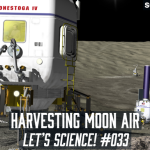 There's enough oxygen in the Moon's soil to keep 8 billion breathing for 100,000 years. Lindsay Sant and Gerard Trapnell discuss how scientists know this and plans they have for harvesting Moon air for future human habitation.
There's enough oxygen in the Moon's soil to keep 8 billion breathing for 100,000 years. Lindsay Sant and Gerard Trapnell discuss how scientists know this and plans they have for harvesting Moon air for future human habitation. Let's talk about some robots in space. Lindsay and Lino discuss the coolest and cutest little floating robot assistants on the International Space Station called astrobees and then talk about MOXIE, an oxygen-generating robot on Mars.
Let's talk about some robots in space. Lindsay and Lino discuss the coolest and cutest little floating robot assistants on the International Space Station called astrobees and then talk about MOXIE, an oxygen-generating robot on Mars. With lots of food puns, Lindsay and Lino discuss a recent study that reveals how much our daily chewing burns calories all on its own, but also how the way we chew and how much we do it may have contributed to the evolution of our jawlines.
With lots of food puns, Lindsay and Lino discuss a recent study that reveals how much our daily chewing burns calories all on its own, but also how the way we chew and how much we do it may have contributed to the evolution of our jawlines.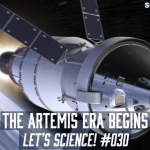 NASA is launching the Artemis I mission that begins our return to the Moon. Lindsay and Lino discuss the Artemis I mission, what will happen, all the science involved, plus what comes next.
NASA is launching the Artemis I mission that begins our return to the Moon. Lindsay and Lino discuss the Artemis I mission, what will happen, all the science involved, plus what comes next.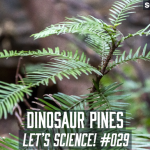 Dinosaur trees! Caroline and Lindsay talk about the Wollemi Pine tree and its links to prehistoric Australia and dinosaurs, and why Caroline recently purchased one for her home.
Dinosaur trees! Caroline and Lindsay talk about the Wollemi Pine tree and its links to prehistoric Australia and dinosaurs, and why Caroline recently purchased one for her home.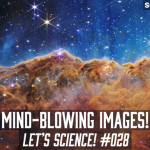 The James Webb Space Telescope's first image are amazing and Caroline, Lindsay, and Lino share their awe as they pore over the details of what the images actually show and what we can expect in the future.
The James Webb Space Telescope's first image are amazing and Caroline, Lindsay, and Lino share their awe as they pore over the details of what the images actually show and what we can expect in the future. NASA has launched a rocket from Australia and our Aussie panel is very excited. Caroline Knight, Lindsay Sant, and Lino Saubolle discuss what the new launch means for future space travel from Oz, as well as the science being conducted by this launch.
NASA has launched a rocket from Australia and our Aussie panel is very excited. Caroline Knight, Lindsay Sant, and Lino Saubolle discuss what the new launch means for future space travel from Oz, as well as the science being conducted by this launch.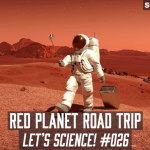 Space bucket list! Lindsay Sant and Lino Saubolle discuss 8 tourist destinations that any future tourist on Mars will want to visit, from the obvious (Olympus Mons) to the weird and mysterious (Medusae Fossae).
Space bucket list! Lindsay Sant and Lino Saubolle discuss 8 tourist destinations that any future tourist on Mars will want to visit, from the obvious (Olympus Mons) to the weird and mysterious (Medusae Fossae). Telescopes have now given us our first image of the supermassive black hole at the center of our galaxy. Caroline Knight tells us how we discovered there was a black hole there and the amazing story of how this incredible image was made.
Telescopes have now given us our first image of the supermassive black hole at the center of our galaxy. Caroline Knight tells us how we discovered there was a black hole there and the amazing story of how this incredible image was made. Before the Big Bang Theory was widely accepted, there were many theories to explain how the universe began. Lindsay Sant and Lino Saubolle discuss five alternative theories that were advanced prior to the currently accepted theory and why they all ultimately failed to explain the universe's origins.
Before the Big Bang Theory was widely accepted, there were many theories to explain how the universe began. Lindsay Sant and Lino Saubolle discuss five alternative theories that were advanced prior to the currently accepted theory and why they all ultimately failed to explain the universe's origins.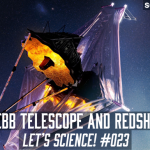 We revisit the historic new James Webb Space Telescope and its first amazing discoveries and then Caroline explains to Lindsay and Lino some astronomical terms like redshift.
We revisit the historic new James Webb Space Telescope and its first amazing discoveries and then Caroline explains to Lindsay and Lino some astronomical terms like redshift. The Thylacine, aka the Tasmanian Tiger or Tassie Tiger, is extinct, but as Caroline tells Lindsay and Lino, scientists now think it may be possible to bring them back. How is that possible? Will they still be the same animal? And is it moral and ethical to do so even if we can?
The Thylacine, aka the Tasmanian Tiger or Tassie Tiger, is extinct, but as Caroline tells Lindsay and Lino, scientists now think it may be possible to bring them back. How is that possible? Will they still be the same animal? And is it moral and ethical to do so even if we can?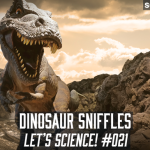 Even dinosaurs got sniffles! Caroline tells Lindsay and Lino about a new discovery that shows that some sauropods show evidence of having had respiratory infections. Then Lindsay discusses an exploration of how close we could be to building a real USS Enterprise starship.
Even dinosaurs got sniffles! Caroline tells Lindsay and Lino about a new discovery that shows that some sauropods show evidence of having had respiratory infections. Then Lindsay discusses an exploration of how close we could be to building a real USS Enterprise starship.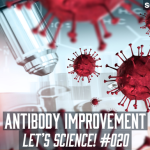 Getting better all the time! Caroline explains to Lindsay and Lino how the quality of antibodies from COVID-19 vaccines improve over time, what antibodies are, and what they do in us. Plus an update on a recent story about a rocket crashing into the Moon.
Getting better all the time! Caroline explains to Lindsay and Lino how the quality of antibodies from COVID-19 vaccines improve over time, what antibodies are, and what they do in us. Plus an update on a recent story about a rocket crashing into the Moon. The International Space Station has been humanity's outpost on the edge of space for more than 20 years, but now its end date has been set. Caroline Knight and Lindsay Sant discuss the history of the ISS, its accomplishments, the date set for its retirement, and where it will end up.
The International Space Station has been humanity's outpost on the edge of space for more than 20 years, but now its end date has been set. Caroline Knight and Lindsay Sant discuss the history of the ISS, its accomplishments, the date set for its retirement, and where it will end up.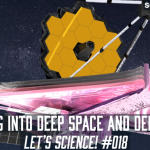 The James Webb Telescope is the newest science asset in space and will look deeper into the universe than ever before. Lindsay and Lino discuss the amazing discoveries it's expected to make in its lifetime. Plus they discuss an old SpaceX rocket heading for a collision with the Moon.
The James Webb Telescope is the newest science asset in space and will look deeper into the universe than ever before. Lindsay and Lino discuss the amazing discoveries it's expected to make in its lifetime. Plus they discuss an old SpaceX rocket heading for a collision with the Moon. Why do we feel so sleepy after eating that holiday meal of turkey? Caroline tells Lindsay and Lino that it's not as simple as tryptophan making you sleepy. Plus why that uniquely Australian and New Zealander dish of pavlova can be so fluffy, why peppermint candy canes make your mouth feel cold, and why flambé doesn't burn the pudding.
Why do we feel so sleepy after eating that holiday meal of turkey? Caroline tells Lindsay and Lino that it's not as simple as tryptophan making you sleepy. Plus why that uniquely Australian and New Zealander dish of pavlova can be so fluffy, why peppermint candy canes make your mouth feel cold, and why flambé doesn't burn the pudding.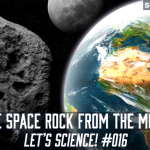 That's no moon! Caroline tells Lindsay and Lino that astronomers have discovered a quasi-moon companion of Earth that may in fact be a piece of the Moon that broke off from it eons ago. Plus NASA's mission to defend our planet from killer space rocks.
That's no moon! Caroline tells Lindsay and Lino that astronomers have discovered a quasi-moon companion of Earth that may in fact be a piece of the Moon that broke off from it eons ago. Plus NASA's mission to defend our planet from killer space rocks. What can dropping an egg teach us about the forces acting on it? Caroline, Lindsay, and Lino are joined by Caroline's son Frankie to discuss his egg drop experiment as well as inertia, velocity, and gravity.
What can dropping an egg teach us about the forces acting on it? Caroline, Lindsay, and Lino are joined by Caroline's son Frankie to discuss his egg drop experiment as well as inertia, velocity, and gravity.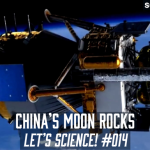 China's lunar rover has returned a payload of rocks from the Moon and Caroline tells Lindsay and Lino that the rocks are much younger than those retrieved by Apollo and reveal more about volcanic activity there, providing new answers about the history of the solar system.
China's lunar rover has returned a payload of rocks from the Moon and Caroline tells Lindsay and Lino that the rocks are much younger than those retrieved by Apollo and reveal more about volcanic activity there, providing new answers about the history of the solar system. The ground shook in Melbourne, Australia, recently with the largest recorded earthquake ever. Caroline, Lindsay, and Lino talk about their experiences during the tremor and then Caroline explains the what causes earthquakes and how the different layers in the ground beneath us contribute to them.
The ground shook in Melbourne, Australia, recently with the largest recorded earthquake ever. Caroline, Lindsay, and Lino talk about their experiences during the tremor and then Caroline explains the what causes earthquakes and how the different layers in the ground beneath us contribute to them.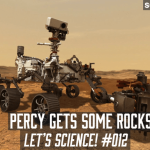 The Mars Perseverance Rover perseveres in its rock core sampling mission to finally collect its first sample. But Caroline tells Lindsay and Lino that they shouldn't hold their breath waiting for it to be studied. Plus T. Rex face bites showed that love hurt in the Cretaceous period.
The Mars Perseverance Rover perseveres in its rock core sampling mission to finally collect its first sample. But Caroline tells Lindsay and Lino that they shouldn't hold their breath waiting for it to be studied. Plus T. Rex face bites showed that love hurt in the Cretaceous period.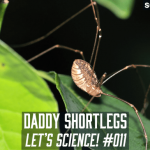 The Daddy Longlegs may be the most common household spider and no matter how you feel about spiders in general, they are in fact helpful at clearing out other bugs and pests. Caroline, Lindsay, and Lino discuss their fascinating facts and how some scientists have created some Daddy Shortlegs in a DNA experiment. What could go wrong?
The Daddy Longlegs may be the most common household spider and no matter how you feel about spiders in general, they are in fact helpful at clearing out other bugs and pests. Caroline, Lindsay, and Lino discuss their fascinating facts and how some scientists have created some Daddy Shortlegs in a DNA experiment. What could go wrong?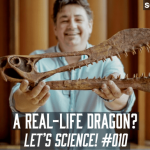 There's another new Australian dinosaur, but this one could have been a real-life dragon. Lindsay and Lino discuss the newly discovered pterosaur that was basically a terrifying flying shark. Plus the new Netflix documentary on SpaceX's first all-civilian spaceflight.
There's another new Australian dinosaur, but this one could have been a real-life dragon. Lindsay and Lino discuss the newly discovered pterosaur that was basically a terrifying flying shark. Plus the new Netflix documentary on SpaceX's first all-civilian spaceflight.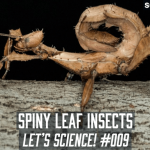 It's lockdown again and Caroline has gone bug crazy. Lindsay and Lino discuss with Caroline her new obsession with interesting mail-order insects, including the fascinating Australian walking stick, also called the Spiny Leaf Insect.
It's lockdown again and Caroline has gone bug crazy. Lindsay and Lino discuss with Caroline her new obsession with interesting mail-order insects, including the fascinating Australian walking stick, also called the Spiny Leaf Insect.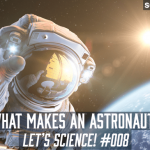 What is the definition of astronaut? Who gets to call themselves by that name? Caroline, Lindsay, and Lino discuss whether simply going into space is enough to earn the title of astronaut and whether the title and definition make a difference as we head into an era in which space travel will open up to everyone.
What is the definition of astronaut? Who gets to call themselves by that name? Caroline, Lindsay, and Lino discuss whether simply going into space is enough to earn the title of astronaut and whether the title and definition make a difference as we head into an era in which space travel will open up to everyone. For the first time, an asteroid has been named for Aboriginal elder Uncle Ghillar Michael Anderson because of his efforts at connecting modern astronomy with ancient understandings of the sky. Plus Caroline and Lindsay discuss the billionaire space race.
For the first time, an asteroid has been named for Aboriginal elder Uncle Ghillar Michael Anderson because of his efforts at connecting modern astronomy with ancient understandings of the sky. Plus Caroline and Lindsay discuss the billionaire space race. There's a new largest dinosaur in Australia called Cooper. Caroline Knight and Lindsay Sant tell us about this new species, how it came to be found and what it takes to determine if found bones are a new kind of animal. Plus a little bit about our neighbor Venus.
There's a new largest dinosaur in Australia called Cooper. Caroline Knight and Lindsay Sant tell us about this new species, how it came to be found and what it takes to determine if found bones are a new kind of animal. Plus a little bit about our neighbor Venus.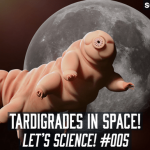 Tardigrades, also known as water bears, and bob-tailed squid are headed to the International Space Station. Caroline Knight and Lindsay Sant discuss these fascinating creatures, their adaptations to harsh environments like space, and how they can help humans on Earth.
Tardigrades, also known as water bears, and bob-tailed squid are headed to the International Space Station. Caroline Knight and Lindsay Sant discuss these fascinating creatures, their adaptations to harsh environments like space, and how they can help humans on Earth.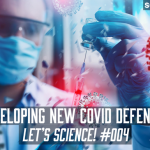 Australian scientists are on the forefront of developing new treatments for those suffering from COVID-19, and Caroline, Lindsay, and Lino discuss how they could reduce the severity of the disease. Plus the Super Blood Moon eclipse and a Japanese lunar ball rover.
Australian scientists are on the forefront of developing new treatments for those suffering from COVID-19, and Caroline, Lindsay, and Lino discuss how they could reduce the severity of the disease. Plus the Super Blood Moon eclipse and a Japanese lunar ball rover.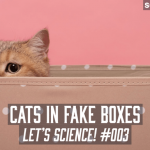 Cats love sitting in boxes. But can they be fooled into sitting in fake boxes? Caroline, Lindsay, and Lino discuss a real study into this question and the science of illusory squares and animal behavior involved. Plus SpaceX Starship news.
Cats love sitting in boxes. But can they be fooled into sitting in fake boxes? Caroline, Lindsay, and Lino discuss a real study into this question and the science of illusory squares and animal behavior involved. Plus SpaceX Starship news. Could humanity one day travel the stars using a spaceship that warps space around it? Caroline, Lindsay, and Lino explore the science of warp drives and what current theories propose might be possible.
Could humanity one day travel the stars using a spaceship that warps space around it? Caroline, Lindsay, and Lino explore the science of warp drives and what current theories propose might be possible. Would you believe that 5,200 tons of extraterrestrial dust fall on Earth every year? Caroline and Lindsay discuss where all that stellar dust is coming from and where it all goes. Plus an update on the Mars Ingenuity helicopter's first flight test.
Would you believe that 5,200 tons of extraterrestrial dust fall on Earth every year? Caroline and Lindsay discuss where all that stellar dust is coming from and where it all goes. Plus an update on the Mars Ingenuity helicopter's first flight test.